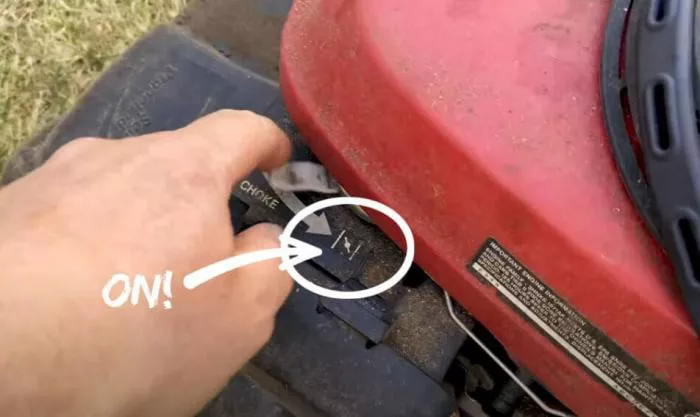Automatic chokes are essential components in modern lawn mowers, designed to regulate the air-fuel mixture for optimal engine performance, especially during cold starts. When functioning correctly, they ensure smooth ignition and consistent operation. However, if the automatic choke malfunctions, your mower may struggle to start, run erratically, or emit excessive smoke. Understanding how to diagnose and repair this system is crucial for maintaining your lawn mower’s efficiency and longevity. This guide provides a detailed, step-by-step approach to troubleshooting and fixing common automatic choke issues.
Understanding the Automatic Choke System
The automatic choke is a thermostatic device that adjusts the choke plate based on engine temperature. When the engine is cold, the choke restricts airflow, enriching the fuel mixture for easier starting. As the engine warms up, the choke gradually opens to allow more air, leaning the mixture for optimal performance.
Key Components of an Automatic Choke
The system consists of several parts: the choke plate, thermostat spring, linkage, and mounting bracket. The thermostat spring expands or contracts with temperature changes, moving the choke plate accordingly. If any of these components fail, the choke may not function correctly.
Common Symptoms of a Faulty Automatic Choke
A malfunctioning automatic choke can cause several issues. Recognizing these symptoms early helps prevent further engine damage.
Hard Starting or Failure to Start: If the choke does not close properly when cold, the engine may not receive enough fuel to start. This often results in prolonged cranking or no ignition at all.
Engine Stalling or Rough Running: A stuck choke plate can cause the engine to run too rich or too lean. This leads to sputtering, stalling, or uneven performance.
Black Smoke from the Exhaust: Excessive black smoke indicates a rich fuel mixture, often caused by a choke plate that remains closed when it should open.
Tools and Materials Needed for Repair
Before starting the repair, gather the necessary tools and materials. Having everything ready ensures a smooth process.
Basic Tools: You will need a screwdriver set, pliers, a wrench, and a socket set. These tools help disassemble and reassemble the choke mechanism.
Cleaning Supplies: A carburetor cleaner, compressed air, and a soft brush are useful for removing dirt and debris from the choke components.
Replacement Parts: If the choke is damaged beyond repair, you may need a new thermostat spring, choke plate, or entire choke assembly.
Step-by-Step Guide to Fixing the Automatic Choke
Follow these steps to diagnose and repair the automatic choke on your lawn mower.
Inspect the Choke Plate and Linkage
Begin by locating the choke assembly on the carburetor. Check if the choke plate moves freely. If it is stuck, gently clean it with carburetor cleaner and a brush. Ensure the linkage connecting the choke plate to the thermostat spring is intact and not bent.
Test the Thermostatic Spring
The thermostatic spring controls the choke plate movement. If the spring is weak or broken, it will not respond to temperature changes. Remove the spring and test its tension. A functional spring should expand when cold and contract when warm. If it does not move, replace it.
Clean the Carburetor and Choke Housing
Dirt and debris can hinder choke operation. Spray carburetor cleaner into the choke housing and use compressed air to blow out any residue. Pay special attention to small passages where grime may accumulate.
Adjust the Choke Mechanism
Some automatic chokes have an adjustment screw or bracket. Refer to your mower’s manual for proper settings. Loosen the screw, move the choke plate to the correct position, and tighten the screw. Ensure the plate fully closes when cold and fully opens when warm.
Reassemble and Test the Mower
After cleaning and adjusting, reassemble the choke components. Start the mower and observe its performance. If the engine starts easily and runs smoothly, the repair was successful. If problems persist, further inspection may be needed.
Preventive Maintenance for the Automatic Choke
Regular maintenance prevents choke issues and extends the life of your lawn mower.
Keep the Carburetor Clean: Dirty carburetors are a common cause of choke failure. Clean the carburetor periodically to avoid clogs.
Use Fresh Fuel: Stale fuel can gum up the choke mechanism. Always use fresh gasoline and add a fuel stabilizer if the mower will sit unused for long periods.
Store the Mower Properly: Store the mower in a dry, covered area to prevent moisture damage to the choke components.
When to Seek Professional Help
If you have followed all steps and the choke still does not work, consult a professional. Persistent issues may indicate deeper engine problems that require expert attention.
Conclusion
Fixing an automatic choke on a lawn mower is a manageable task with the right tools and knowledge. By understanding how the choke works, recognizing symptoms of failure, and performing regular maintenance, you can keep your mower running efficiently. If repairs seem too complex, do not hesitate to seek professional assistance. A well-functioning choke ensures reliable starts and smooth operation, making lawn care easier and more enjoyable.
This guide provides a comprehensive approach to diagnosing and repairing automatic choke issues. With patience and attention to detail, you can restore your mower’s performance and avoid costly repairs in the future.
Reated topics:
- HOW TO ADJUST THE CHOKE ON A HONDA LAWN MOWER
- HOW TO START AUTO CHOKE LAWN MOWER
- 4 BEST 48 INCH RIDING LAWN MOWER

